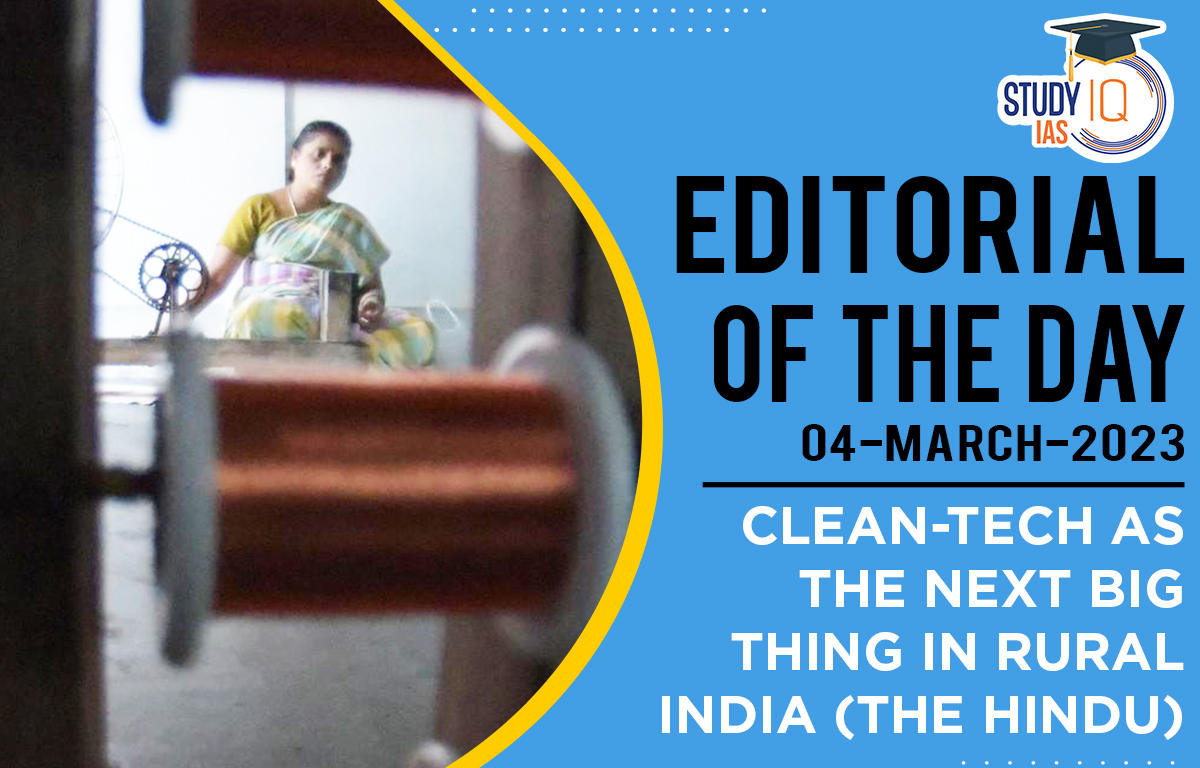Table of Contents
Women from rural India have been adopting clean energy-based livelihood technologies to catalyze their businesses.
- Distributed renewable energy (DRE) is transforming women’s livelihoods at the grassroots, from solar refrigerators to silk-reeling machines and biomass-based cold storage to bulk milk chillers.
- A study by Council on Energy, Environment and Water (CEEW) has shown that 80% out of the 13,000 early adopters of clean tech livelihood appliances are women.
- DRE-powered technologies provide an additional advantage to women entrepreneurs by enhancing income opportunities through mechanization. They also free them from several gender-assigned manual activities that are laborious.
- By 2030, India will witness 30 million women-owned micro, small and medium enterprises (MSMEs) employing around 150 million people.
- DRE livelihood technologies alone have the potential to transform rural livelihoods, with women at the centre of this transition.
Initiatives to Enhance the Reach of Clean Technologies to Rural Women
- Use experience of early adopters: Since DRE appliances are perceived as high-risk purchases by women users, it is necessary that technology providers must allow early users to share their experiences with potential customers.
- Because of their first-hand product experience and local credibility, potential women customers may be encouraged to buy DRE appliances.
- Organizing local events and demos: Women customers having limited access to information would want to see its usage live before believing in its ability and promised benefits.
- Organizing local events will create opportunity for women to network, become aware of the product and interact with people who can help them procure, finance and use these machines.
- Easy financing: Arranging finances for clean technology products remain a bottleneck. Financiers supporting women entrepreneurs need to consider the technologies themselves as collaterals while easing the loan process.
- Technology manufacturers must make efforts to ensure adequate after-sales services and buy-backs. They must be ready to offer partial default guarantees to win confidence of buyers.
- Support backwards and forward market linkages: Providing technology is not enough. Promoters must make efforts for connecting producers to consumption hubs in urban areas to generate higher incomes.
- Since rural women do not have established market linkages because of their limited mobility, setting up business models that enable them to sell to an intermediary can ensure regular revenue.
- Policy convergence: Private entities do not have the reach and scale of government institutions. Ministries working towards promoting livelihoods for women must ensure that policies are in place.
Conclusion
- Scaling the impact of clean energy technologies on women’s livelihoods needs a village of policymakers, investors, financiers, technology promoters and other ecosystem enablers.
- This will help unlock the potential of rural women and clean technologies simultaneously.





















 WhatsApp
WhatsApp